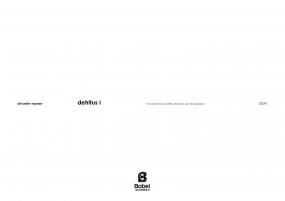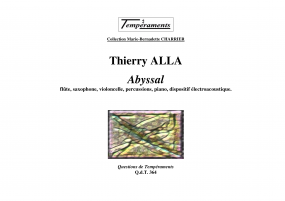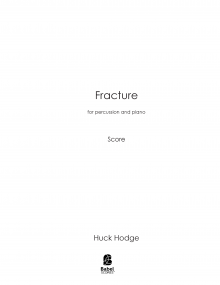O ew'ge Nacht
for piano, cello and electronics
11,33 €
Versión digital (+0,00 €) para descarga
Versión impresa (+14,80 € impresión y envío). Colissimo7-14 days aprox.
Al comprar una partitura, usted puede contactar al compositor aquí mismo!
Especificaciones
Region
Europe
Estimated Duration
16 - 20min
Date
2016
ISMN : 979-0-2325-3078-9
Descripción
Add to list
- Login to create your own lists
O ew’ge nacht
When approach to participate in the project “Sound Correspondences” I was told that the concert was to be related to a collective exhibition of the CGAC. For me the artist involved is María Ruido who presented her work “La memoria interior” for me. While there may be certain connections between our works (construction of memory would be one), what immediately struck me was the very beginning where, in complete darkness, Nur Stille, Stille (from Mozart’s Die Zauberflöte) is heard.
The title of my piece, O ew’ge nacht, is also taken from Die Zauberflöte where it is a short recitative; the topic being that of questions about the afterlife, eternal life, and love.
If the recitative is a Message from Beyond, this music struggles, through the performers (as some kind of deformed Papageno and Pamina figures), trying to ask a question. The effect of struggle is twofold, for while the music itself articulates a search through potential material, the player is faced with notation of great complexity from which a performance must be extrapolated. In this sense, the struggle is not only that of the extreme performance situation, but also one of creating a piece of music of any real significance.
It (tries to) offer a reflexive narrative of how it is to be in the world; it can never hope to be objective or to tell anyone anything new, but nevertheless holds out for the possibility that one might, in the telling, somehow stumble across something of note; musical composition (and, by extension, listening) as an attempt to bring order to a (fictionally) broken down remnant of… what? The distant past? The depths of the subconscious? (The inner Memory?)
When the chorus answers Tamino’s question “O eternal night, when will you disappear? they represent a calling from an afterlife, and they provide two answers: to the question of when he should find light, the dying Mozart receives the response “Soon, soon or never more,” and the syllabic singing of the name “Pa-mi-na” becomes an incantation…
Instrumentation
Piano|Cello|Electronics
Score Details
Format - A3 / Tabloid
Pages - 26
Pages - 26








